
Methods and Objects of Chemical Analysis
Scope & Guideline
Shaping the Future of Chemical Analysis Together
Introduction
Aims and Scopes
- Analytical Method Development:
The journal emphasizes the creation and refinement of analytical methods, including spectrophotometry, chromatography, and electrochemical techniques, to improve the detection and quantification of various substances. - Sample Preparation Techniques:
A significant focus is placed on innovative sample preparation methods that enhance the sensitivity and specificity of analytical procedures, such as cloud point extraction and QuEChERS. - Environmental and Food Analysis:
Research addressing the analysis of environmental samples and food products is a core theme, reflecting the journal's commitment to public health and safety through the detection of contaminants and quality assessment. - Pharmaceutical Analysis:
The journal frequently publishes studies on the analysis of pharmaceutical compounds, showcasing methods for quality control and validation of drugs and their metabolites. - Multicomponent Analysis:
A distinctive aspect of the journal is its focus on methods capable of simultaneous analysis of multiple components, which is crucial for efficiency in both research and industry.
Trending and Emerging
- Sustainable and Green Analytical Methods:
There is an increasing trend towards the development of environmentally friendly analytical methods, reflecting a global emphasis on sustainability in chemical analysis. - Advanced Chromatographic Techniques:
Recent publications indicate a surge in studies utilizing advanced chromatographic techniques, such as HPLC and UPLC, showcasing their application in various fields, particularly in pharmaceuticals and food safety. - Integration of Chemometrics:
The incorporation of chemometric techniques in data analysis is gaining traction, as researchers seek to enhance the interpretation of complex analytical data through statistical and mathematical approaches. - Nanotechnology in Analysis:
Emerging research is focusing on the application of nanotechnology in analytical methods, which offers improved sensitivity and specificity in detecting trace amounts of substances. - Health and Safety in Food Analysis:
With growing public concern over food safety, there is an evident increase in studies related to the detection of contaminants, additives, and nutritional components in food products.
Declining or Waning
- Traditional Voltammetric Techniques:
Although voltammetric methods have been a staple in analytical chemistry, there has been a noticeable decrease in the publication of studies focusing solely on traditional voltammetric techniques, possibly due to a shift towards more advanced and integrated analytical methodologies. - Basic Qualitative Analysis:
There seems to be a reduced emphasis on basic qualitative analysis methods, as more researchers are opting for quantitative and complex analytical approaches that provide more comprehensive data. - Single-Method Studies:
The journal has seen a decline in articles that focus on single-method analyses, as there is a growing trend towards multi-method approaches that combine various techniques for enhanced analytical performance.
Similar Journals
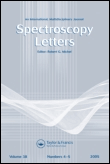
SPECTROSCOPY LETTERS
Pioneering Insights in Optics and Molecular StudiesSPECTROSCOPY LETTERS, published by Taylor & Francis Inc, is a pivotal journal that plays a significant role in the fields of Analytical Chemistry, Atomic and Molecular Physics, and Optics. With an ISSN of 0038-7010 and E-ISSN of 1532-2289, it provides a platform for the dissemination of cutting-edge research and developments in spectroscopy and its wide-ranging applications. As of 2023, the journal is ranked in the third quartile (Q3) across its relevant categories, reflecting its importance in these scientific domains. The journal has a continuous publication history from 1968 to 2024, establishing a rich legacy in academic literature. Although it currently does not offer Open Access options, SPECTROSCOPY LETTERS remains a valuable resource for researchers, professionals, and students seeking to advance their knowledge and applications in spectroscopy. For those in the arena of physics and chemistry, this journal is essential for keeping abreast of the latest findings and methodologies in the field.

Food Chemistry-X
Connecting Researchers to the Future of Food Science.Food Chemistry-X is a premier open-access journal published by Elsevier, dedicated to advancing the field of food chemistry through high-quality research and comprehensive reviews. With its ISSN of 2590-1575, the journal has gained significant attention since adopting an open-access model in 2019, allowing wide dissemination of knowledge and innovations in food science. Based in the United Kingdom, it holds prestigious Q1 rankings in both Analytical Chemistry and Food Science categories as of 2023, positioning itself as a leading platform for researchers worldwide. The journal's focus spans extensive topics within food chemistry, including food safety, nutritional analysis, and the chemical properties of food, offering insights that are crucial for addressing contemporary challenges in food production and consumption. With a Scopus rank placing it in the 65th percentile among the top journals in Food Science and the 58th percentile in Analytical Chemistry, Food Chemistry-X is an essential resource for academics, professionals, and students seeking to stay at the forefront of research and innovation in this vibrant field.
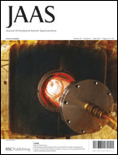
JOURNAL OF ANALYTICAL ATOMIC SPECTROMETRY
Empowering Researchers with Cutting-Edge Spectroscopic Techniques.JOURNAL OF ANALYTICAL ATOMIC SPECTROMETRY, published by the esteemed Royal Society of Chemistry, stands as a vital resource in the fields of Analytical Chemistry and Spectroscopy. Since its inception in 1971, this journal has been committed to disseminating cutting-edge research, offering an invaluable platform for the presentation of quantitative and qualitative analytical methods. With an impressive impact factor and a current classification in the Q2 category of both Analytical Chemistry and Spectroscopy, it significantly contributes to the advancement of knowledge in these disciplines. Researchers, professionals, and students looking to deepen their understanding of atomic spectrometry will find a wealth of innovative studies, reviews, and methodological papers that consistently push the boundaries of traditional and emerging analytical techniques. Although not an open-access journal, it provides accessible options that facilitate the engagement of a broad academic audience, ensuring that vital research is not confined solely to institutional repositories. The journal's exceptional standing, demonstrated by its strong Scopus rankings, further underscores its critical role in the scholarly communication landscape.

TALANTA
Shaping the Future of Analytical ChemistryTALANTA, published by Elsevier, is a premier international journal that serves as a vital platform in the field of analytical chemistry. Since its inception in 1958, TALANTA has provided a comprehensive forum for the dissemination of groundbreaking research and developments in chemical analysis, spanning a wide array of topics including biochemistry and spectroscopy. With an impressive impact factor and ranking in the Q1 quartile within its category for 2023, it is ranked #12 out of 156 journals in Analytical Chemistry by Scopus, placing it among the most influential journals in its field. Researchers, professionals, and students benefit from its stringent peer-review process and high-quality content that drives advancements in analytical methodologies and applications. TALANTA's commitment to fostering innovation and excellence in research makes it an indispensable resource for anyone at the forefront of scientific inquiry.
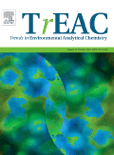
Trends in Environmental Analytical Chemistry
Exploring Innovative Solutions for Environmental ChallengesTrends in Environmental Analytical Chemistry, published by Elsevier, serves as a leading platform for scholars and professionals in the fields of analytical and environmental chemistry. With an impact factor that places it in the Q1 category for both analytical chemistry and environmental chemistry, this journal attracts cutting-edge research that addresses current challenges in environmental analysis from 2014 to 2024. The journal is dedicated to advancing the knowledge base through the publication of high-quality empirical studies, innovative methodologies, and comprehensive reviews that reflect the latest trends and technological advances in the field. Operating out of the Netherlands, the journal's commitment to excellence is evident in its impressive Scopus rankings, standing as the #1 journal in Analytical Chemistry and #7 in Environmental Chemistry by percentiles. This makes it an essential resource for academics, practitioners, and students alike who are eager to stay informed on impactful environmental research and analytical techniques.
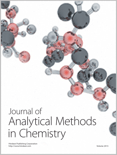
Journal of Analytical Methods in Chemistry
Empowering researchers with open access to cutting-edge findings.The Journal of Analytical Methods in Chemistry, published by HINDAWI LTD, stands as a premier platform dedicated to the dissemination of research in the vibrant field of analytical chemistry. With an ISSN of 2090-8865 and an E-ISSN of 2090-8873, this Open Access journal has been committed to providing unrestricted access to quality research since 1978, thereby fostering greater collaboration and innovation among researchers, professionals, and students globally. The journal showcases rigorous research insights spanning diverse categories, earning impressive Scopus rankings including Q2 in Chemical Engineering and Q3 in Analytical Chemistry for 2023, positioning itself effectively among respected peers. Its interdisciplinary approach also covers significant contributions in the realms of instrumentation and computer science applications, thus addressing contemporary challenges and advancements in analytical methodologies. By bridging theoretical underpinnings with practical applications, the Journal of Analytical Methods in Chemistry aims to catalyze knowledge exchange while enhancing the global discourse in analytical science.

JPC-JOURNAL OF PLANAR CHROMATOGRAPHY-MODERN TLC
Advancing the Art of Planar Chromatography.JPC-JOURNAL OF PLANAR CHROMATOGRAPHY-MODERN TLC, published by Springer Heidelberg, is a pivotal resource in the fields of Analytical Chemistry, Biochemistry, and Clinical Biochemistry. With an ISSN of 0933-4173 and an E-ISSN of 1789-0993, this journal serves as an essential platform for the dissemination of innovative research on planar chromatography techniques, specifically modern thin-layer chromatography (TLC). With its upcoming coverage extending to 2024 and a third quartile ranking (Q3) across major scientific categories in 2023, it addresses the critical advancements and applications in analytical methods. Although it does not offer open access, the journal's rigorous peer-review process ensures high-quality findings that contribute to the progression of these vital scientific disciplines. The journal is located in Heidelberg, Germany, and continues to be a beacon for researchers, professionals, and students who seek to enhance their knowledge and practice in chromatographic techniques.
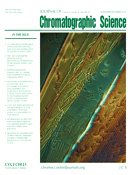
JOURNAL OF CHROMATOGRAPHIC SCIENCE
Connecting Scholars to the World of ChromatographyWelcome to the Journal of Chromatographic Science, a premier publication dedicated to advancing the scientific understanding of chromatographic techniques and their applications across various disciplines. Published by Oxford University Press Inc, this journal, with its ISSN 0021-9665 and E-ISSN 1945-239X, has been disseminating innovative research since 1963, serving as a vital resource for researchers, industry professionals, and academic scholars in the fields of Analytical Chemistry and Medicine. As evidenced by its 2023 Scopus ranking, the journal stands at the Q3 quartile in both its primary disciplines, highlighting its relevance and contribution to ongoing research. The journal promotes high-quality, peer-reviewed articles that aim to foster knowledge and encourage the practical application of chromatographic science. While it operates under a traditional subscription model, the valuable insights it offers are essential for those seeking to enhance their expertise and stay at the forefront of chromatographic methodologies. Join our community of scholars as we explore the complexities and innovations in chromatographic science, paving the way for future discoveries.

ACTA CHROMATOGRAPHICA
Fostering Collaboration in the World of ChromatographyACTA CHROMATOGRAPHICA is a distinguished academic journal dedicated to the field of chromatography and its applications, published by AKADEMIAI KIADO ZRT. With a history spanning from 1996 to 2024, this journal serves as a vital platform for the dissemination of innovative research and advancements within the field, contributing significantly to the body of knowledge in the domain of general chemistry. Operating out of Budapest, Hungary, ACTA CHROMATOGRAPHICA holds a Q3 ranking in the chemistry category as of 2023, reflecting its impact and relevance among its peers, achieving a Scopus ranking of 180 out of 408 in the General Chemistry category, placing it in the 56th percentile. While not currently Open Access, the journal offers robust subscription options for readers and institutions seeking to stay informed on the latest developments in chromatography. FACTA CHROMATOGRAPHICA aims to foster communication, collaboration, and discovery, making it an essential resource for researchers, professionals, and students seeking to enhance their expertise in this evolving field.
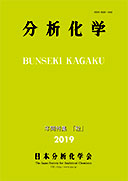
BUNSEKI KAGAKU
Exploring the Depths of Analytical TechniquesBUNSEKI KAGAKU, published by the Japan Society Analytical Chemistry, is a reputable journal dedicated to the field of analytical chemistry. With an ISSN of 0525-1931, this journal has been a crucial outlet for scholarly communication since its inception in 1952, converging its publication years from 1954 to 1957 and from 1959 to 2024. Although it holds a Q4 category ranking in the most recent 2023 quartiles of analytical chemistry and ranks 153/156 in Scopus, it continues to serve as a platform for quality research, fostering advancements in the field. BUNSEKI KAGAKU is based in Tokyo, Japan, and emphasizes the critical importance of analytical techniques in scientific inquiry. With a commitment to professionalism and rigor, the journal provides a vital resource for researchers, students, and professionals seeking to explore innovative methodologies and contribute to the ongoing dialogue in analytical chemistry.